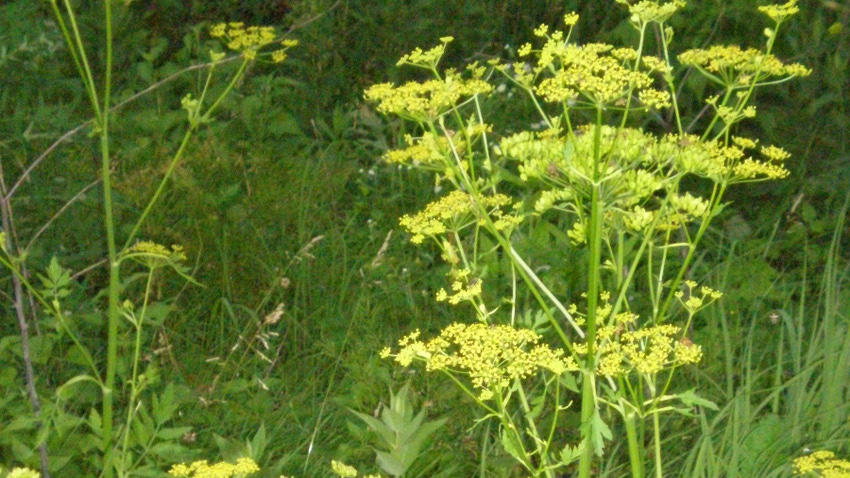
Maybe you’ve come down with a burning, itching, pesky rash after mowing weeds with a weed trimmer. Poison ivy gets blamed for many rashes, mostly deserved. But you could have tangled with wild parsnip.
“Standing next to wild parsnip will not give you burning blisters,” says Chris Enroth, a horticulture Extension specialist with the University of Illinois. Unlike poison ivy, which can cause a rash in sensitive individuals through direct contact with leaves, you must contact the sap of wild parsnip to be affected.
“A person must make skin contact with the sap from a broken leaf or stem,” Enroth says. “The combination of sap on your skin and exposure to UV light causes phytophotodermatitis. It’s an interaction between plants and light that induces skin irritation. The effects are a severe sunburn.”
Identifying wild parsnip
Here is information to help separate wild parsnip from other plants you might find along roadsides or in natural areas:
Wild parsnip. Plants are 2 to 5 feet tall, Enroth says. The stem is slightly hairy and grooved. Leaves are coarse with saw-toothed edges. The umbrella-shaped flower is yellow.
Cultivated parsnip. This derived from wild parsnip but is not a threat to humans. Instead, it’s a wholesome vegetable for those who like it.
Queen Anne’s lace. This plant is closely related to wild parsnip with a similar, umbrella-shaped flower, Enroth says. However, the flower is white, and it blooms later than wild parsnip.
Senecio. Identified by Keith Johnson, a Purdue Extension forage specialist, as a problem in livestock pastures and hayfields over two decades ago, this weed also produces yellow flowers, although the shape of the flower head is different. Senecio can be poisonous to livestock and should also be avoided.
Poison hemlock. You may also run across this weed, and it should be avoided by humans and livestock. As with Queen Anne’s lace, its flower is white.
Managing wild parsnip
Here are several tips Enroth offers to minimize problems with wild parsnip:
If you were exposed … Wash the area that contacted wild parsnip sap immediately. If you already feel the burn, contact a physician for wound care recommendations.
Weed later in the evening. Lower levels of sunlight should help you avoid the blistering process if you do contact wild parsnip sap.
Let cut wild parsnip dry. It’s less risky to handle if it is cut and allowed to dry.
Wear protective clothing. A long-sleeve shirt and long pants for an activity like weed eating should minimize or eliminate contact with plant sap.
Dispose of cut plants. Wild parsnip can develop seed while lying on the ground.
Control in the rosette and preflowering stages. Wild parsnip is a biennial, so control should be done before it flowers. Consider controlling basal rosettes in the fall.
Use mechanical control. Cut roots 1 to 2 inches below the surface. Wear protective equipment, including eye protection and even a mask, when dealing with large populations of this weed.
Use chemical control. Broad-spectrum or broadleaf herbicides will be most effective against small rosettes. Contact Extension for information on herbicide options.
Information from “Identify, avoid and manage troublesome wild parsnip” by Christopher Enroth, horticulture educator, University of Illinois Extension, was used in this article.
About the Author(s)
You May Also Like




